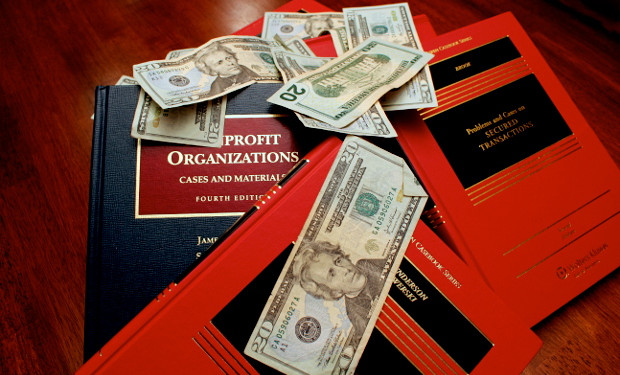Hopelessness and Student Debt: The Perfect Match?
It’s no secret. Law school is expensive. The average law student who pays for school through loans will graduate with over $100,000 in debt. Repaying those loans is often times overwhelming. There are some ways to discharge student loan debt, but most graduates will face the task of repayment on their own.
Last year, The New York Times published an article detailing the prospects of having one’s student loan debt discharged through federal bankruptcy. In this article, the author states that through federal bankruptcy there is at least a “reasonable shot” at shedding some student loan debt. Bankruptcy was once an method to get rid of student loan debt, but the process has become more difficult in recent decades.
Before the mid-1970’s, debtors could discharge student loan debt through bankruptcy just as they could get rid of credit card or auto loan debt. But after reports of doctors and lawyers using bankruptcy to absolve their student loan debts, Congress changed the law in 1976. Now, federal bankruptcy law requires that students wishing to discharge student loan debt show that repayment will cause “undue hardship.”
The law does not precisely define “undue hardship,” so the task of defining this term has fallen into the hands of federal bankruptcy judges. Most judges adhere to the Brunner test, named after a case that laid out a three-prong standard for determining whether to discharge student loan debt.
In Brunner, the United States Court of Appeals for the Second Circuit held that in order to show undue hardship, the debtor must first show that he “cannot maintain, based on current income and expenses, a ‘minimal’ standard of living . . . if forced to repay the loans.” Second, the debtor must show “additional circumstances exist indicating that this state of affairs is likely to exist for a significant portion of the repayment period of the student loans.” Finally, the debtor must show that he has made “good faith efforts” to repay the loans.
Part of the test examines the debtor’s future prospects of repaying his or her student loans, placing bankruptcy judges in the prediction business. Many bankruptcy judges have established the “certainty of hopelessness” test, which requires debtors to testify to the current and future state of their financial situations. This obviously puts debtors in an uncomfortable position by having to state in open court that their financial situations are hopeless, and some debtors have even committed perjury to avoid such embarrassment.
Despite the potential for embarrassment, a number of student loan debtors take the leap and try to have their debts absolved through bankruptcy. Those who choose to do so faceoff against the Educational Credit Management Corporation (ECMC). The ECMC is a government-sanctioned agency hired to handle loan-related legal tasks, including fighting debtors who file for bankruptcy. The ECMC reports on its website that chances of meeting the high burden under the certainty of hopelessness test are bleak, and that individuals “rarely” succeed in discharging student loan debt.
But some academic researchers disagree. In one study, two researchers examined 115 filings from Washington State. This study found that 57 percent of those who attempted were able to have some or all of their student loan debt discharged. In another study, Harvard Law School graduate Jason Iuliano examined 207 filings and found that 39 percent of the individuals were able have some or all of their debt discharged. Iuliano thinks the ECMC’s view of the rarity of success is “wrong” and believes there are some 69,000 people who could see success through bankruptcy. Although a 39 percent chance is not the best, it’s worth a shot for the debtor who has tried everything else.

